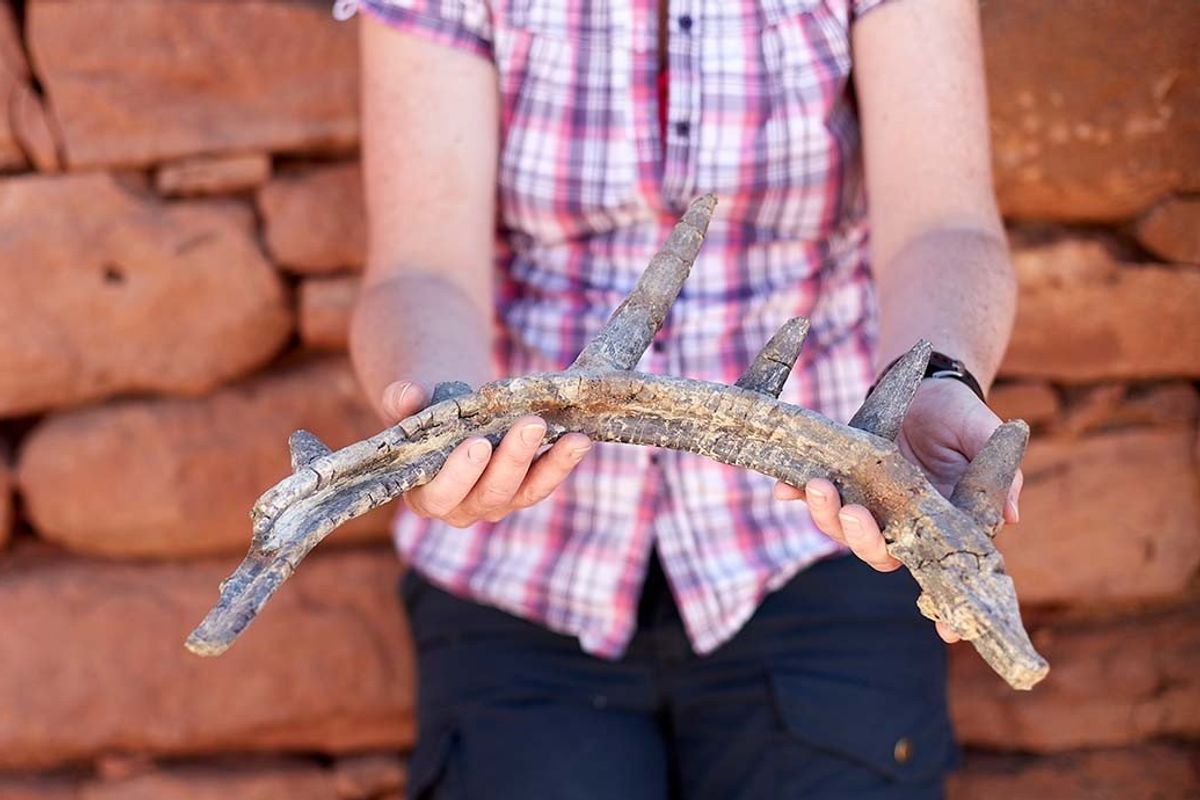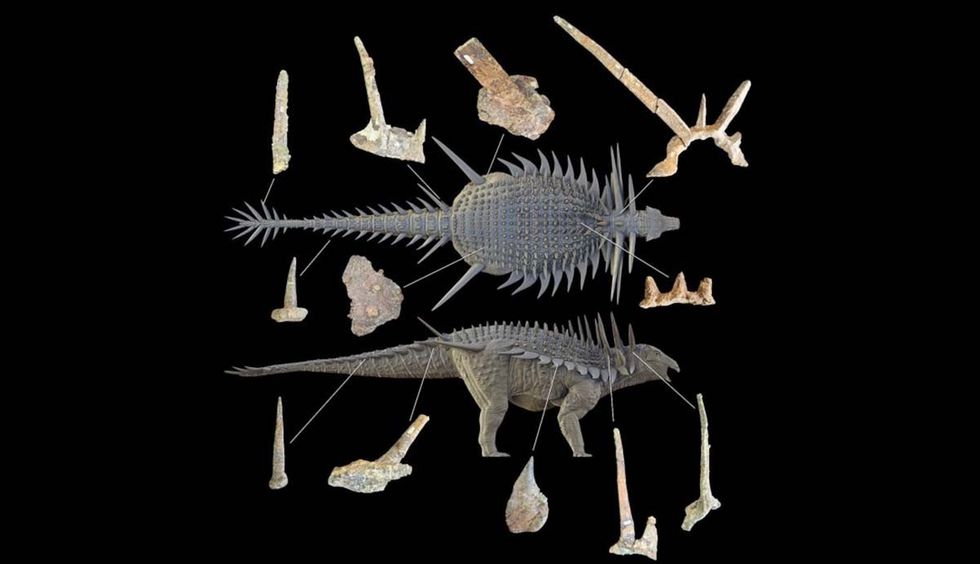Sinead Butler
Aug 31, 2025
What If Dinosaurs Never Went Extinct?
Underknown / VideoElephant
Ever heard of Spicomellus afer? It has been described as one of the more unusual dinosaurs, and new research has only further confirmed this.
Recently discovered fossils have revealed that its entire skeleton was covered in extraordinary bone spikes measuring up to a metre long, and these defences evolved earlier than previously estimated, with this research being published in the journal Nature.
The initial bone
This discovery started in 2019, when palaeontologist Professor Susannah Maidment acquired an extraordinary dinosaur rib bone from a fossil dealer in Cambridge.
What was distinctive about this rib bone was that the protective spines fused to its surface - something never seen before with any species.

The dinosaur was then named Spicomellus afer by Susannah and her team, who were eager to study this creature further.
When it comes to the fossil's origins, we know it came from somewhere near the town of Boulemane, Morocco, but its specific origins were unknown.
Further study
More investigation was required, and that's exactly what Maidment and a team of British, American and Moroccan palaeontologists did.
With the goal of finding further Spicomellus’s remains, they set out on an expedition to the region, and were able to retrieve a lot more of the fossil, and discovered spikes covered the dinosaur's entire body.
But that's not all. More spikes were found, "projecting out of its hips, a tail weapon, blade-like bones running down its sides and a bony collar ringed with spikes. The longest are believed to have been more than a metre long, sticking out from either side of its neck," according to the Natural History Museum.
The findings
As the oldest known ankylosaur at 165 million years old, it makes this research even more staggering, with Maidment noting how experts are rethinking how armoured dinosaurs evolved due to these “absolutely bizarre” fossils.

“When we originally named Spicomellus, there were doubts that it was an ankylosaur at all,” Maidment explained. “Now, not only can we confirm beyond a doubt that this interpretation was correct, but Africa’s only known ankylosaur is far weirder than anyone imagined.”
“To find such elaborate armour in an early ankylosaur changes our understanding of how these dinosaurs evolved. It shows just how significant Africa’s dinosaurs are, and how important it is to improve our understanding of them.”
Furthermore, the paper co-lead and The University of Birmingham’s Professor Richard Butler noted how these recent fossil discoveries are “an incredibly significant discovery”.
“Spicomellus is one of the strangest dinosaurs that we’ve ever discovered,” Richard says. “It’s utterly unlike any other found anywhere else in the world.”
“I think it's going to really capture the imagination of people around the world, and tell us a lot about the early evolution of the tank-like ankylosaurs.”
Elsewhere from Indy100, Scientists discover 225-million-year-old bone that changes everything we know about dinosaurs, and 9,000-year-old rock sketches proves early humans knew all about dinosaurs.
How to join the indy100's free WhatsApp channel
Sign up to our free indy100 weekly newsletter
Have your say in our news democracy. Click the upvote icon at the top of the page to help raise this article through the indy100 rankings.
Top 100
The Conversation (0)














